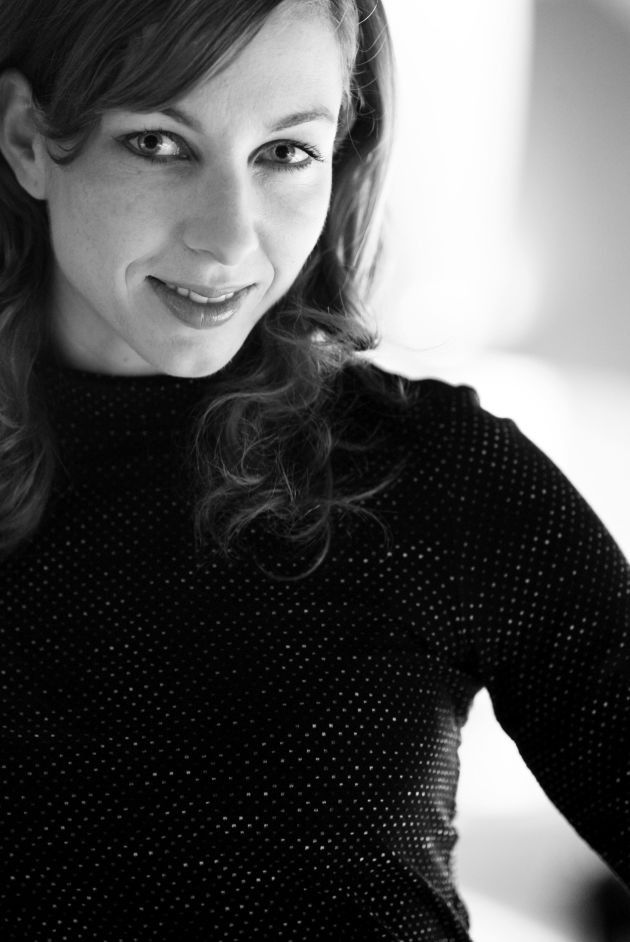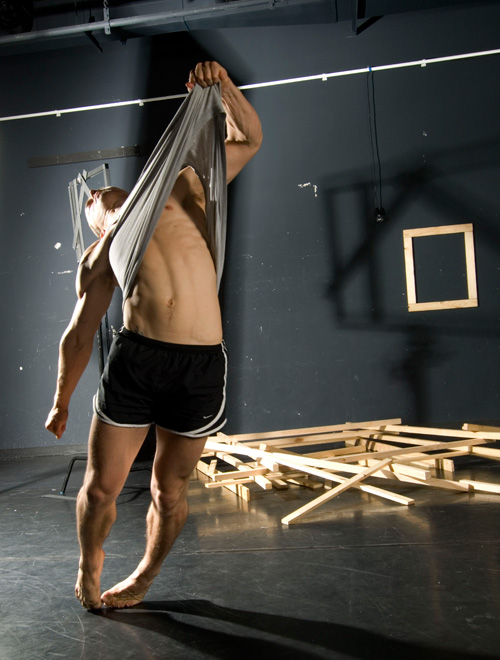In memory of Tanja: an opportunity for independent artists
The Tanja Liedtke Foundation (TLF) honours the memory of the incredibly talented Tanja Liedtke and has supported some of Australia’s most promising young choreographers through the Tanja Liedtke Fellowship. With applications open for the fifth Fellowship, Karen van Ulzen spoke to founders of the TLF, Tanja’s parents Gerlinde and Kurt Liedtke, about Tanja’s life, work and the Foundation that has been created in her honour.

Tanja Liedtke was a creative powerhouse.
A charismatic performer, her first professional engagement was a coveted contract with Australian Dance Theatre, where she stayed until 2003, before joining Britain’s ground-breaking DV8 Physical Theatre. At the same time as her career as a dancer was flourishing, she was also developing her own work and her first full-length work, Twelfth Floor, premiered in 2004. Picked up by the Australia Council’s Mobile States initiative in 2006, Twelfth Floor toured Australia, taking out the Australian Dance Award for Outstanding Achievement in Choreography. It was a massive coup for the young Tanja, but the best was yet to come. Having created two more full-length works, Imploded and construct, Tanja was appointed artistic director of Sydney Dance Company in May 2007. She was 29 years old. Just months later, however, she died in a road accident, leaving her family and friends devastated, and the Australian dance industry stunned.
In a bid to honour Tanja's life, the Tanja Liedtke Foundation was established in 2008 by her parents, Gerlinde and Kurt Liedtke, with the aim of preserving and sharing her artistic legacy as well as supporting the development of contemporary dance and fostering international artistic exchange. The Liedtkes are from Germany and one of the TLF’s major projects is the Tanja Liedtke Fellowship, which offers an independent dance artist four weeks in Berlin. This includes a three-week creative residency at ada Studio. Now, nearly ten years since Liedtke’s passing, the foundation has supported four independent artists through the fellowship program and is about to open applications for the fifth Fellowship.
Talking to Tanja’s parents, Kurt and Gerlinde, on a recent trip to Australia, it’s apparent that her affinity with movement dates back to childhood. Born in Stuttgart, Germany, Tanja had a cosmopolitan childhood. Her father’s job with Bosch involved plenty of travel and the family moved to Spain when Tanja was four years old, before heading to the UK eight years later and then Melbourne eight years after that.
For Tanja, though, it was all about Sydney when it came to dance. Having trained first at Elmhurst Ballet School and then Ballet Rambert School London, in the UK, she elected to continue her training with Tanya Pearson. “”[Tanja] loved Sydney so much,” recalls Gerlinde. “She didn't like Melbourne. I wanted [her to attend] the Victorian College of the Arts, but she said, ‘No, I think I have somebody in Sydney I want to go to.’ And it was Tanya Pearson. I must say she was right. What Tanya Pearson gave Tanja [was the ability] to dance from inside her body.”
The seeds of Tanja’s extraordinary talent for choreography were evident much earlier than that, however. “When Tanja was six years old she invited all the neighbourhood kids and she put all her dresses on them and made a little show,” remembers Gerlinde. “She was the artistic director! And she was not the oldest. But she had these ideas. Constant ideas. She went to a museum and picked the typical part of a Picasso or Miro or Dali and could put it on paper. And you could see what it was an image of.”

It was Tanja’s ability to distil the essence of an idea that makes her choreographic works so accessible, Gerlinde believes. “What she did in her choreography, this is what I realise now… she could put things in movement and the audience could understand. And that is what I think is so great in her work. Because, that makes dance interesting for a wider audience. And that is what Tanja wanted. She said, ‘… I want to entertain [people]. They go home, they have an hour and they have something to talk about. I don't care if they're happy or unhappy or if they think it's good or bad, I want to make them think.’”
While neither Gerlinde nor Kurt will take credit for Tanja’s dance talent, Kurt believes that her skills as a manager came from him, although he says that Tanja’s skills surpassed his own. “She was capable of making people believe that what they do is their own conviction, when it came from her,” he explains. “You know there are managers who are bullies, who manage by fear. There are others who manage by consent, compromise. She was managing by conviction. She gave everybody the conviction that what they were doing was their own will. But it was her who was behind this. And this is the best managerial system you can have. There are not many managers in the world who have this, that the whole team is fully committed. Not because they think, 'This is the boss,' but because they think this is what they want to do. In that she was absolutely brilliant.”
After Tanja passed away, Gerlinde and Kurt set up the Tanja Liedtke Foundation. “In the very beginning it was a way to handle the grief," explains Kurt. “And then, handling the grief very much became about preserving the legacy of Tanja, her works.
“Tanja was fortunate, in a way, that she had parents who could support her career. Many... dancers are very, very gifted, have a lot of talent, they are also prepared to invest all of their pain and time and everything. But they don't have the money. And so we thought, there are so many young talented dancers and choreographers who are in a similar position as Tanja but without somebody who can care financially for them. So we thought let's give a bit of a helping hand in that. So these were the main reasons we set up a foundation.”
Gradually the foundation began to attract donations from outside the Liedtke family, says Kurt. “We found interest around us in France and other people and we also got some donations, in Germany donations can be tax deductible. Meanwhile, we sent out, once a year, our annual report to all our friends and sponsors and they would send us more donations. When we have a birthday we always say, 'No presents, donations instead please.' Everybody knows.”

In addition to the aforementioned Tanja Liedtke Fellowship, the TLF offers travel scholarships. It has also enabled the restaging of some of Tanja’s works, the inclusion of a filmed version of construct through the US online library On the Boards, and the construction of a comprehensive Tanja Liedtke digital archive. The TLF has also supported the making of the feature length documentary Tanja: A Life in Movement, which has been screened worldwide, to great acclaim. Gerlinde and Kurt are great supporters of dance film generally, "because they do these wonderful works and then in two weeks they are gone. Film can record those works and make them more popular.”
Heading up the TLF has given Kurt and Gerlinde an insight into the challenges faced by dance artists. “[We have learned] how hard [dancers] work; how loyal they are, how honest; the character of the dancer,” reflects Gerlinde. “Tears come up in your eyes when you see on one hand this horrible greedy world and then this dance world which is so honest and fighting and humble.”
Interview by Karen van Ulzen
Article by Nina Levy
The Tanja Liedtke Fellowship
Applications for the 2017 Tanja Liedtke Fellowship will open in October, with a closing date of 16 December 2016. The Fellowship offers the successful applicant four weeks in Berlin, from 31 July to 27 August and includes a three-week creative residency at ada Studio. The Fellowship program is designed to coincide with Berlin’s Tanz im August, the city’s international contemporary dance festival. Past winners of the Tanja Liedtke Fellowship include Antony Hamilton (2009), Katarzyna Sitarz (2011), Joseph Simons (2013) and Gabrielle Nankivell (2015).
For more information head to www.tanja-liedtke-foundation.org


